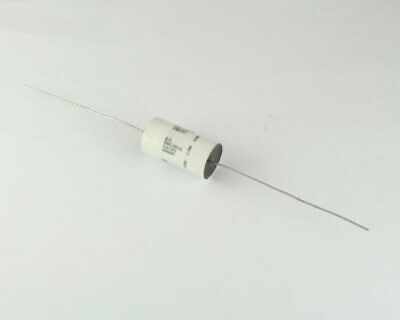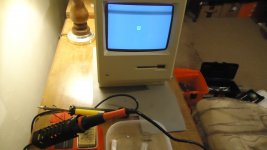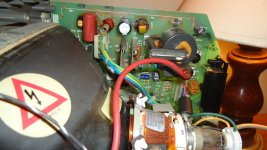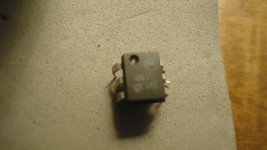Virtual Davey
Member
I've been forwarded to this forum for advice on a Mac Plus All in One I acquired recently. I've been told from the picture of your motherboard, it's definitely a Mac Plus, was likely a 512k once, but it's been upgraded.
When I first tested it it would operate properly for about 5 - 10 minutes, then just rapidly begin turning on/off on/off constantly (beeping every time).
I had changed all 3 RIFA caps and the unit worked great for about an hour. But I must say, when I first turned it on after replacing those caps, it did not boot up immediately. It turned on/off like before but much faster. After about a minute it came to life and didn't happen again. Then an hour later the screen turned off, and the floppy drive began constantly spinning. I then replaced all the caps on the analog board, but it made no difference. Still no screen boot, floppy spins on it's own and no beep. Also a "crackling" noise from the flyback.
This unit had extensive battery damage on it's frame, but both boards were safe. I cleaned both boards, reseated some chips, reflowed many of the joints on the power board (not all),cleaned the mess as well as I could (not pictured), still no change. Monitor tube will not boot, but neither will the computer board, only the drive starts spinning on it's own. Here are some pictures. Be warned some of these pictures were before the clean up.
I don't have any battery installed, if that makes a difference.
This is my first Mac, so I'm a newbie here as far as repairing these goes. I've repaired many vintage game consoles but this is an entirely different beast.
When I first tested it it would operate properly for about 5 - 10 minutes, then just rapidly begin turning on/off on/off constantly (beeping every time).
I had changed all 3 RIFA caps and the unit worked great for about an hour. But I must say, when I first turned it on after replacing those caps, it did not boot up immediately. It turned on/off like before but much faster. After about a minute it came to life and didn't happen again. Then an hour later the screen turned off, and the floppy drive began constantly spinning. I then replaced all the caps on the analog board, but it made no difference. Still no screen boot, floppy spins on it's own and no beep. Also a "crackling" noise from the flyback.
This unit had extensive battery damage on it's frame, but both boards were safe. I cleaned both boards, reseated some chips, reflowed many of the joints on the power board (not all),cleaned the mess as well as I could (not pictured), still no change. Monitor tube will not boot, but neither will the computer board, only the drive starts spinning on it's own. Here are some pictures. Be warned some of these pictures were before the clean up.
I don't have any battery installed, if that makes a difference.
This is my first Mac, so I'm a newbie here as far as repairing these goes. I've repaired many vintage game consoles but this is an entirely different beast.
Attachments
-
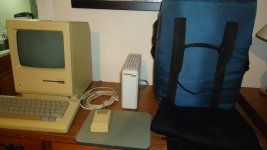 DSC01518.JPG622.5 KB · Views: 65
DSC01518.JPG622.5 KB · Views: 65 -
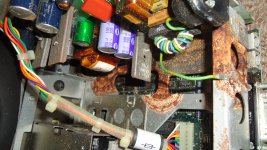 DSC01521.JPG735.6 KB · Views: 67
DSC01521.JPG735.6 KB · Views: 67 -
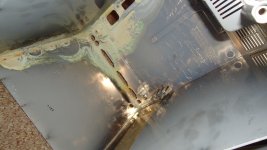 DSC01522.JPG697.9 KB · Views: 65
DSC01522.JPG697.9 KB · Views: 65 -
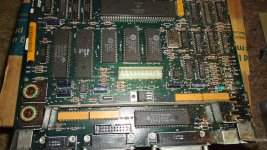 DSC01523.JPG772.6 KB · Views: 67
DSC01523.JPG772.6 KB · Views: 67 -
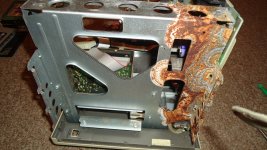 DSC01524.JPG753.7 KB · Views: 62
DSC01524.JPG753.7 KB · Views: 62 -
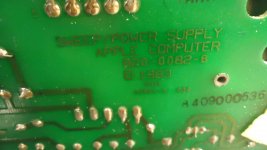 DSC01545.JPG616.1 KB · Views: 57
DSC01545.JPG616.1 KB · Views: 57 -
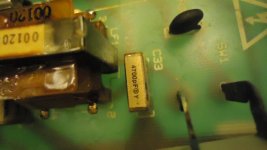 DSC01547.JPG629.1 KB · Views: 53
DSC01547.JPG629.1 KB · Views: 53 -
 DSC01526.JPG783.1 KB · Views: 53
DSC01526.JPG783.1 KB · Views: 53 -
 DSC01543.JPG714.6 KB · Views: 58
DSC01543.JPG714.6 KB · Views: 58 -
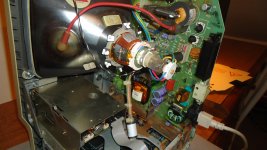 DSC01556.JPG721.2 KB · Views: 50
DSC01556.JPG721.2 KB · Views: 50 -
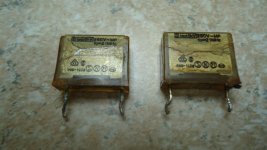 DSC01555.JPG652.9 KB · Views: 50
DSC01555.JPG652.9 KB · Views: 50 -
 DSC01528.JPG517.8 KB · Views: 53
DSC01528.JPG517.8 KB · Views: 53


